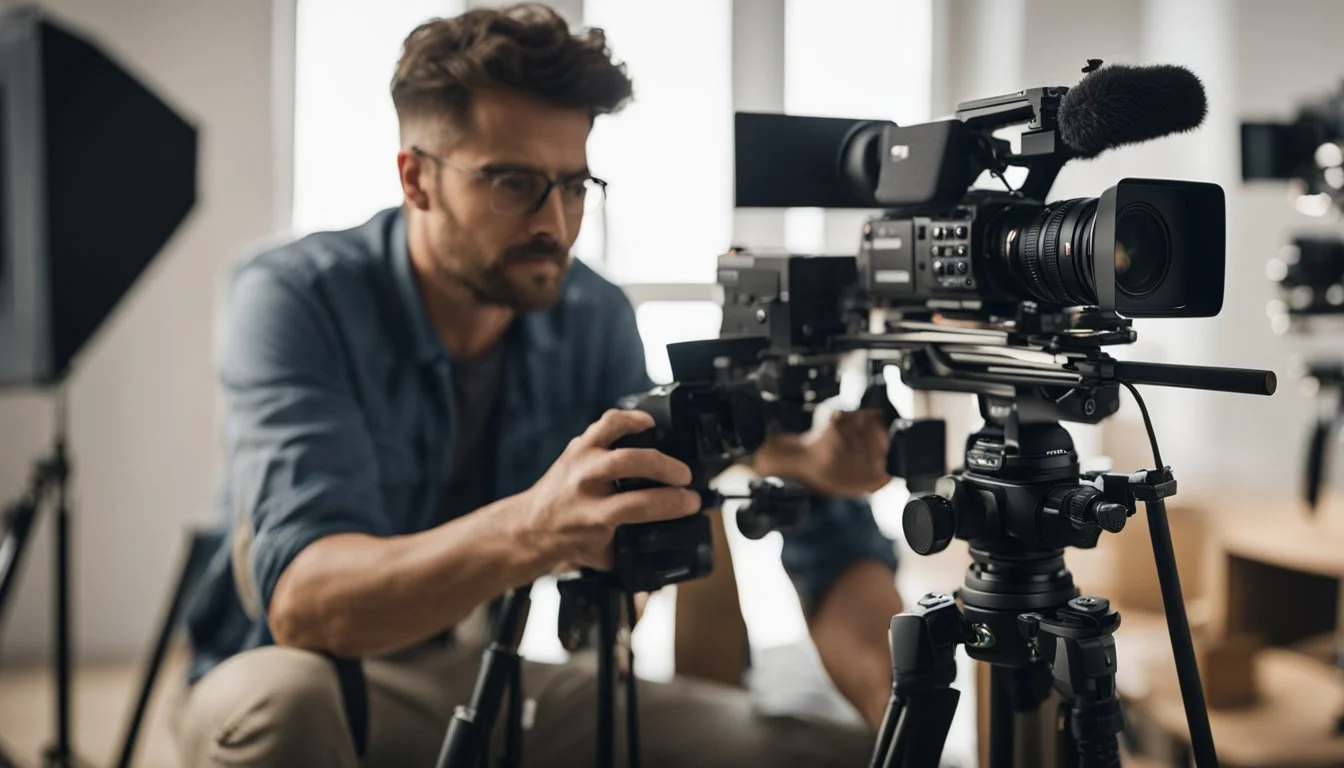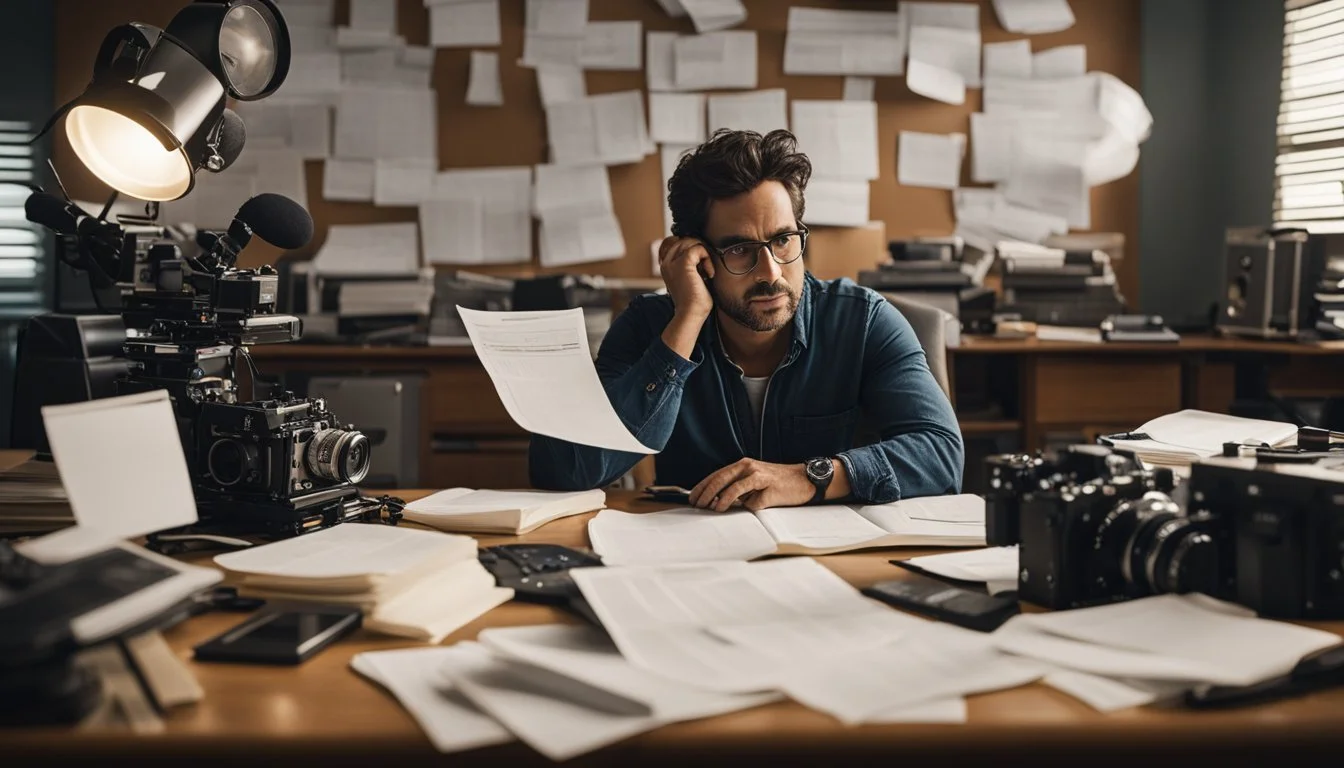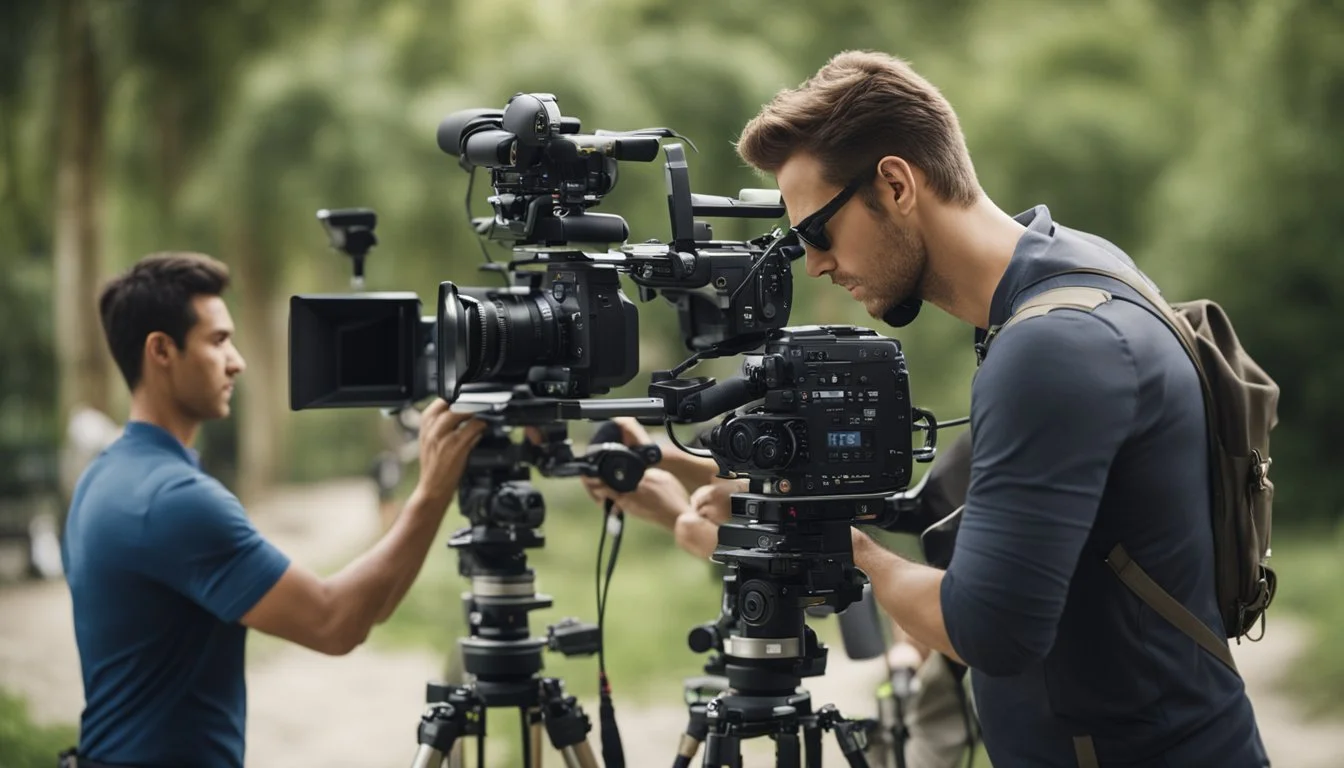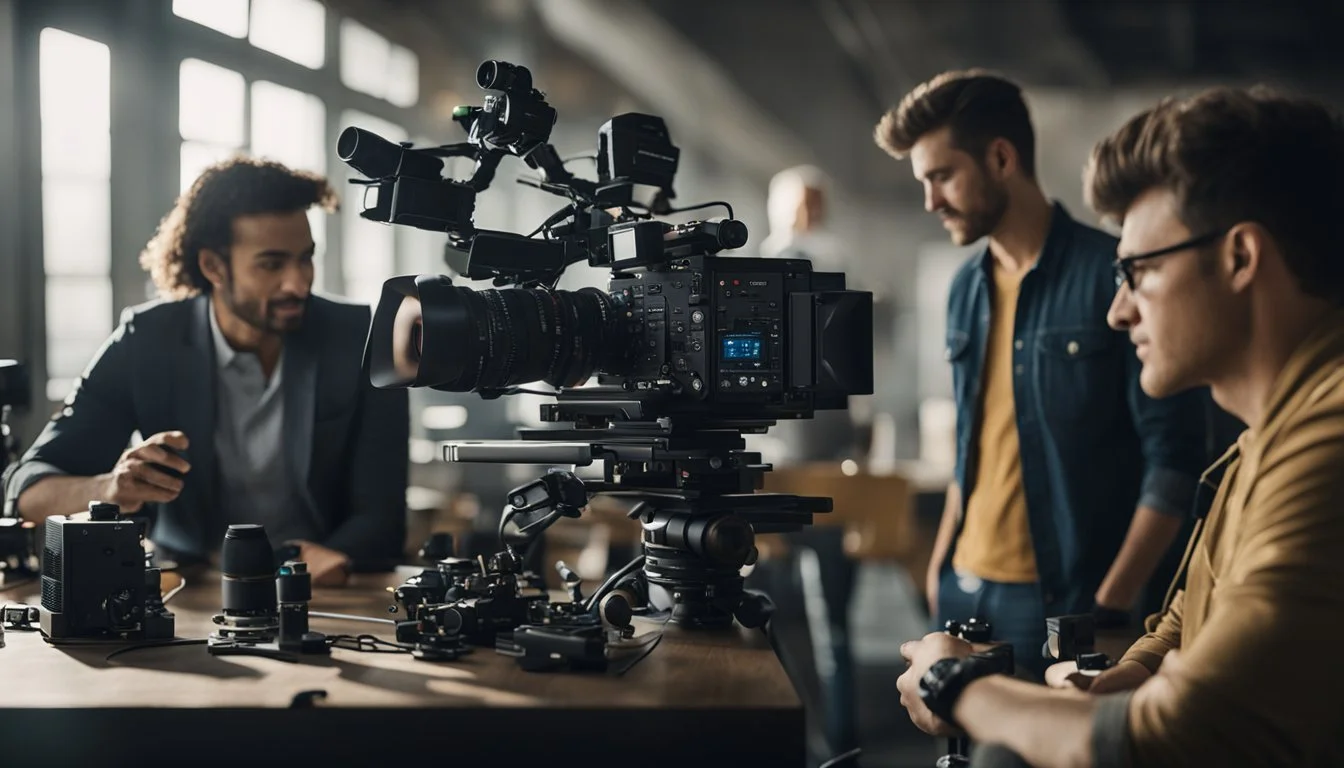Start Making Films
Take Responsibility for Your Success
Start making films. Don't blame equipment or others for mistakes. This straightforward advice can be the single most empowering mindset for a beginner filmmaker. Excuses may be plenty, but taking charge of the learning process and embracing each error as a step towards mastery is key.
The journey of filmmaking involves continuous improvement. Every mistake made is an adjustment to be tackled in the future. By shifting the perspective from blaming external factors to focusing on personal growth, new filmmakers can transform obstacles into opportunities.
Constructive feedback is a crucial tool. When starting with your script, paying attention to critiques can refine the narrative. The real challenge lies in balancing perseverance with openness to change. The mindset of taking responsibility fosters a creative environment where innovations thrive and personal development remains at the forefront.
Mindset for Success in Filmmaking
A crucial aspect of succeeding in filmmaking is having the right mindset. This involves being proactive, resilient, flexible, and collaborative. Each of these qualities plays an essential role in the journey of a filmmaker.
Proactivity means taking initiative. Successful filmmakers identify opportunities and act on them without waiting for external prompts. They plan meticulously and stay ahead of potential challenges.
Resilience is the ability to recover quickly from difficulties. Filmmakers often face unpredictable challenges and setbacks. Resilient individuals maintain their focus and dedication, continually pushing forward despite obstacles.
Flexibility allows filmmakers to adapt to changing circumstances. Projects may not go as planned. Flexibility ensures they can pivot and make necessary adjustments while maintaining the project's integrity.
Collaboration is key. Filmmaking is a team effort, requiring effective communication and cooperation among various roles. Filmmakers must work harmoniously with directors, actors, crew members, and other stakeholders.
A positive outlook is integral. Believing in one's capability to succeed and embracing a growth mindset fosters perseverance and innovation. Successful filmmakers view failures as learning experiences rather than roadblocks.
Avoid a negative mindset. Entering a project with defeatist thoughts or resentment impacts performance and outcomes. Instead, cultivate constructive thinking that encourages problem-solving and creative solutions.
Table of Mindset Traits:
Trait Description Proactivity Taking initiative and planning ahead Resilience Recovering quickly from setbacks Flexibility Adapting to changes and challenges Collaboration Working effectively with a team Positivity Maintaining an optimistic, problem-solving approach
By focusing on these mindset traits, filmmakers position themselves for success.
Understanding the Basics of Filmmaking
Mastering the essentials of filmmaking involves grasping key concepts in storytelling, visual composition, and audio fundamentals. Each element plays a crucial role in creating compelling and professional-quality films.
Storytelling Essentials
The foundation of any film is its story. A well-crafted narrative captivates the audience, making them invested in the characters and plot. Character development and plot structure are critical. Characters should be multi-dimensional, with clear motivations and conflicts.
In terms of plot, classic structures like the three-act format help guide the story. The first act introduces characters and sets up the conflict. The second act explores this conflict, heightening tension and stakes. The third act resolves the conflict, providing closure.
Strong storytelling also involves writing concise dialogue that advances the plot and reveals character traits organically.
Visual Composition
Visual aesthetics are the backbone of how stories are perceived on screen. Good visual composition starts with understanding camera angles and shot types. Different angles convey various emotions and perspectives. For example, high-angle shots can make a character seem vulnerable, while low-angle shots convey power.
Lighting sets the mood and context; natural light vs. artificial light can dramatically alter the scene’s atmosphere. Framing and rule of thirds ensure that each shot is balanced and visually interesting. Shot sequencing — such as establishing shots to set the scene or close-ups to capture emotion — builds the narrative visually.
Audio Fundamentals
While visuals engage the eyes, sound is crucial for immersion. Clear, high-quality audio is essential. Dialogue clarity ensures that the audience can understand the characters. Using external microphones rather than built-in camera mics improves audio quality significantly.
Ambient sound and sound effects add depth to the scene, making it feel more authentic. Finally, musical scores and soundtracks can evoke emotions and underscore the story’s themes. The synchronization of audio with visual elements requires careful attention to detail in both recording and editing.
Understanding these basics will significantly elevate the quality of your films, providing a solid foundation upon which to build more advanced techniques and skills.
Maximizing Your Existing Equipment
Even if you don't have the latest gear, there are many techniques you can use to make the most of what you already own. Understanding proper camera settings, mastering sound recording, and implementing affordable lighting solutions can significantly enhance your filmmaking.
Camera Usage and Optimization
Learn your camera inside out. Understand its manual settings like ISO, shutter speed, and aperture. This helps achieve the look you want without relying on automatic settings, which can be unpredictable. Use a tripod for stable shots. If you have a basic camera, maximize its potential by investing in affordable accessories like lenses or a stabilizer. Proper framing and composition can also elevate the quality of your footage substantially.
Sound Recording Techniques
Good audio is crucial. Use an external microphone instead of relying on the built-in one. A simple lavalier or shotgun mic can drastically improve sound quality. Record in a quiet environment to reduce background noise. If your budget is tight, use free software like Audacity to edit and clean up audio. Position the mic close to the subject to capture clear, focused sound. Always monitor audio levels to avoid distortion.
Lighting on a Budget
Natural light is often your best friend. Shoot during the golden hours of early morning or late afternoon for the best natural light. If shooting indoors, use daylight from windows combined with affordable reflector boards to balance shadows. Inexpensive options like LED panels or even DIY solutions using household lamps can also be effective. Arrange lights to create depth and interest in your scenes, making even low-budget setups look professional.
Pre-production Planning
Effective filmmaking starts with meticulous pre-production planning. This stage ensures your project has a solid foundation through detailed scriptwriting, storyboarding, budget management, and a well-thought-out schedule.
Scriptwriting and Storyboarding
Scriptwriting is the backbone of your film, dictating plot, dialogue, and character actions. It's crucial to focus on clear, engaging storytelling with well-developed characters. A compelling script translates vision into action, ensuring consistency and direction.
After the script is finalized, storyboarding comes into play. Storyboarding involves visualizing scenes through sketches or digital renderings. This helps in planning camera angles, shot compositions, and transitions, making the filming process more efficient. By visualizing each scene, filmmakers can avoid potential pitfalls and streamline the production workflow.
Budget and Schedule Management
Budget management involves forecasting all potential costs, from equipment rentals and location fees to salaries and post-production expenses. A detailed budget ensures financial resources are allocated effectively, preventing overspending. Creating a clear, itemized budget sheet can help track where every dollar goes and allows for adjustments as needed.
Schedule management is equally vital. Developing a production timeline that outlines each day's activities, including rehearsals, shoots, and breaks, keeps the project on track. Using tools like Gantt charts or production scheduling software can aid in visualizing the timeline. Ensuring that everyone on the team is aware of key dates and deadlines helps maintain productivity and reduces stress.
Production Best Practices
To ensure a successful film production, focus on effectively directing actors, mastering camera work and cinematography, and maintaining strict on-set discipline and etiquette. Each aspect plays a crucial role in bringing a vision to life and should not be underestimated.
Directing Actors
Effective communication is crucial. Directors should clearly convey their vision and expectations to the actors. They must create a supportive environment where actors feel comfortable exploring their characters.
Offering constructive feedback is essential. Celebrate small victories to bolster morale. Adjusting performance based on rehearsals or takes helps refine the scenes.
Understanding each actor's method is beneficial. Some may prefer detailed instructions; others thrive on creative freedom. Flexibility in approach can lead to more authentic performances.
Camera Work and Cinematography
Focus on composition and framing. Good shots guide the audience's eye and convey the story effectively. Utilize the rule of thirds, leading lines, and depth to enhance visuals.
Lighting is key to mood and visibility. Master techniques like three-point lighting and natural light manipulation. Proper lighting helps create the desired atmosphere and clarity.
Camera movement should serve the narrative. Pans, tilts, and tracking shots add dynamism but must align with the story's tempo. Erratic movement can distract; smooth motion keeps viewers engaged.
On-Set Discipline and Etiquette
Punctuality is paramount. Arriving on time ensures schedules are met and reduces stress. Delays can disrupt the entire production process.
Respect for roles and hierarchy maintains order. Recognizing each crew member's contribution fosters a collaborative environment. Disregarding this can lead to confusion and inefficiency.
Managing noise levels on set is vital. Unnecessary chatter can break focus and ruin takes. Clear, concise communication minimizes disruptions and keeps the shoot running smoothly.
Post-production Workflow
The post-production workflow is crucial in transforming raw footage into a polished film. This process involves several important steps, including editing the film, color grading, and sound design and mixing. Each step plays a vital role in the final product and ensures that the film delivers a seamless and engaging experience to the audience.
Editing Your Film
Editing is the first significant step in post-production. Editors work alongside filmmakers to organize and refine the footage. Using tools such as Avid Media Composer or Adobe Premiere Pro, they cut scenes, arrange shots for optimal storytelling, and remove any unnecessary elements.
Editors must be meticulous, with a keen eye for detail to maintain narrative cohesion. They collaborate closely with directors and producers to capture the envisioned pacing and tone of the film. Effective editing also includes creating smooth transitions and ensuring continuity across all scenes.
Color Grading
Color grading enhances the visual tone and mood of the film. Colorists use software like DaVinci Resolve to adjust brightness, contrast, and color saturation, creating a consistent visual style. This process can greatly influence the audience’s perception and emotional response to the film.
Key tasks in color grading include correcting color imbalances and achieving specific artistic looks. Colorists often work in tandem with cinematographers to ensure the film’s visual aesthetic aligns with the original vision. This step helps in establishing a distinct visual identity for the film.
Sound Design and Mixing
Sound design and mixing are essential to providing an immersive audio experience. Sound designers add and manipulate audio elements, including sound effects, dialogue, and ambient noises. Tools like Pro Tools are commonly used to layer and edit these elements.
Mixing engineers then balance these audio tracks to ensure clarity and coherence. They adjust volume levels, equalize sounds, and apply effects to enhance the audio quality. The goal is to create a flawless auditory experience that complements the visual storytelling, making the film more engaging and believable.
Effective sound design and mixing immerse the audience, making the film more compelling and polished.
Learning from Mistakes
Embracing mistakes is essential for growth in filmmaking. Beginner filmmakers should focus on identifying common errors, accepting feedback, and consistently improving their skills.
Common Beginner Errors
Novice filmmakers often struggle with technical issues. Misusing camera settings, poor lighting, and inadequate sound quality are frequent errors. Understanding the basics of camera operation and investing time in learning about lighting and audio can mitigate these problems. Another common mistake is neglecting storytelling. A compelling narrative is critical; even the best equipment cannot compensate for a weak story.
Additionally, over-ambitious projects might lead to incomplete or chaotic results. Beginners should start with simple projects, mastering fundamental skills before attempting more complex films.
Feedback and Constructive Criticism
Receiving feedback is vital for filmmakers. Constructive criticism highlights areas that need improvement and can offer new perspectives on the work. Beginners should seek feedback from a variety of sources—mentors, peers, and audiences.
Actively listening to critiques without becoming defensive is crucial. Filmmakers should take notes on recurring issues mentioned by multiple reviewers. Creating a structured way to implement feedback into future projects can help in refining skills.
Continual Improvement and Growth
Growth in filmmaking comes from continual practice and willingness to learn. Filmmakers should watch films critically, noting techniques used by professionals. They can also take online courses, attend workshops, and read books on filmmaking.
Joining filmmaking communities can provide support and inspiration. Regularly working on projects, experimenting with new ideas, and not fearing failure will lead to improvement. Keeping a journal of lessons learned from each project can serve as a valuable resource for tracking progress over time.
Building a Creative Network
To succeed in filmmaking, establishing a strong creative network is crucial.
Attend Film Events and Festivals
Film events and festivals are excellent venues to meet industry professionals. Engaging in conversations at these gatherings can open up opportunities for future collaborations.
Join Online Communities
Online platforms dedicated to filmmaking can be valuable for connecting with like-minded individuals. Participating in discussions and sharing experiences can help build relationships.
Volunteer or Intern
Working on film sets, even as a volunteer or intern, provides hands-on experience and exposure to industry practices. This also allows for meeting and learning from seasoned professionals.
Reach Out to Industry Professionals
If there’s a filmmaker or producer you admire, don’t hesitate to reach out through social media or email. A respectful and genuine introduction can sometimes lead to valuable mentorship or collaboration opportunities.
Collaborate on Projects
Collaborating with others on film projects offers practical network-building experience. By co-creating content, filmmakers can form bonds that lead to future joint ventures.
Engage in Workshops
Workshops provide educational and networking opportunities. Engaging with instructors and peers can enhance skills and contribute to building a professional network.
Building a creative network requires consistent effort, but the relationships formed through these activities can significantly impact a filmmaker's career.
Navigating Film Festivals and Distribution
Film festivals offer avenues for filmmakers to showcase their work. Experimentation with different narratives, styles, and techniques can attract attention. Festivals appreciate innovation.
Feedback is crucial. Audiences, critics, and fellow filmmakers provide valuable insights. This feedback can be essential for growth and refinement.
Filmmakers must be strategic when applying to festivals. Targeting the right festivals can make a significant difference. Each festival has its own unique audience and focus.
Distribution can be complex. It involves making films available through cinemas, streaming platforms, television broadcasts, or community-hosted events.
Various distribution rights exist. Some key types include:
Theatrical Rights: Films are exhibited in cinemas.
Streaming Rights: Films are available on digital platforms.
Broadcast Rights: Films are shown on television.
Having a distribution plan early on is essential. It helps identify the target audience, choose distribution channels, and develop marketing strategies. Budgeting for distribution costs is another critical aspect.
Working with a film distribution company can be beneficial. They can handle various aspects, from theatrical releases to streaming platforms.
Ultimately, a well-thought-out approach to festivals and distribution can significantly enhance a film's reach and impact.







